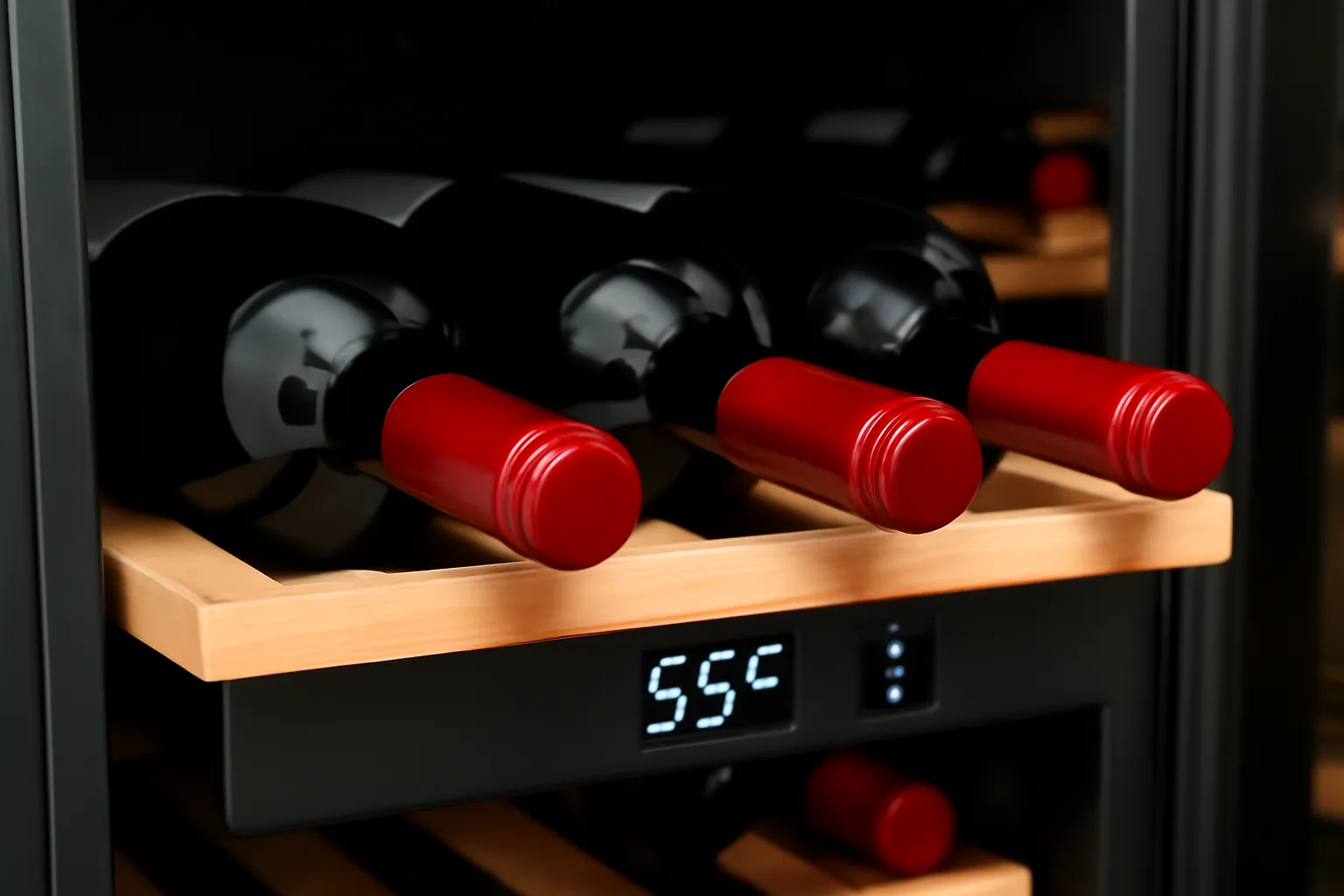What’s the best temperature to store red wine? Can the wrong environment ruin your favorite vintage? Discover the ideal way to store red wine and avoid the costly mistakes most people make—read on to protect your collection the right way.
Red wine appropriate temperature
Temperature is the single most important factor in maintaining a red wine’s flavor and integrity over time. Yet, many wine enthusiasts and even collectors overlook it. In my personal journey managing wine storage both professionally and at home, I’ve seen firsthand how even great wines can suffer from improper care.
The ideal storage temperature for red wine is 55°F (13°C). This is not just a number picked at random—it’s based on the consistent, cool temperatures found in natural wine caves in France, where wines were traditionally aged.
Here’s why this matters:
-
Temperatures above 70°F (21°C) can accelerate wine aging and destroy delicate aromas.
-
Temperatures below 45°F (7°C) can cause corks to dry out, letting air into the bottle and spoiling the wine.
-
Fluctuations are even worse than being slightly off-target—consistency is key.
Let’s break it down by red wine type:
-
Light-bodied reds (e.g., Pinot Noir) Best stored at 53–55°F
-
Medium-bodied reds (e.g., Merlot, Sangiovese) Ideal around 55°F
-
Full-bodied reds (e.g., Cabernet Sauvignon, Syrah) Slightly warmer, 56–58°F
A memorable experience of mine involved a client who stored over 200 bottles of Bordeaux in an attic during a hot summer—despite the investment, many bottles were cooked by August. The lesson? Always prioritize temperature control.
Want to dive deeper into wine storage temperatures for different varietals? Click the button below.
👉Red Wine Storage Temperature Guide👈
Red wine storage temperature
While many focus on drinking temperature, long-term storage temperature is where real preservation magic happens. I’ve helped set up dozens of wine cellars for clients, and temperature regulation always comes first in the blueprint.
Let’s look at key elements of proper temperature storage:
-
Dedicated wine fridges or coolers These maintain stable temperatures unlike kitchen fridges.
-
Basement storage Naturally cooler and insulated from daily temp swings.
-
Wine cabinets with digital thermostats Offer the best combo of visibility and control.
You might be surprised that a typical home refrigerator is too cold—usually below 40°F—and the dry air can damage corks. Conversely, standard room temperature (around 70–75°F) is far too warm for most reds.
Humidity also plays a role:
-
Aim for 60–70% humidity to keep corks moist.
-
Avoid extreme dryness (can shrink corks) and excess moisture (can lead to mold).
For example, one collector I worked with installed a premium wine cooler in their dining room. Within a month, the digital temperature readout had a 10°F fluctuation—caused by afternoon sunlight hitting the unit. A simple curtain solved it.
When setting up your storage:
-
Keep your bottles horizontal to maintain cork moisture.
-
Place the wine cooler away from heat sources.
-
Avoid placing wine racks near windows or ovens.
Still unsure if your space is right for wine storage? Get help planning your wine environment by clicking the link below.
👉Find Your Wine Storage Solution👈
How to store red wine
Beyond just temperature, how you store red wine impacts longevity and taste. I’ve spent years helping enthusiasts build personal wine libraries, and here are the most important lessons I’ve learned.
1. Store Horizontally
Always keep bottles on their sides. This prevents corks from drying out and oxidizing the wine. For screw caps, this isn’t critical—but for most reds, it is.
2. Avoid Light Exposure
Sunlight and even strong indoor lights can break down compounds in wine. UV rays degrade flavor and aroma. That’s why professional cellars are dimly lit or completely dark.
3. Minimize Vibration
Vibrations from household appliances, road traffic, or even HVAC systems can disturb sediment in red wine. Over time, this leads to dull flavors.
4. Maintain Consistent Conditions
Whether it’s a dedicated cellar, a cooler, or a cabinet, the goal is environmental consistency. Avoid moving bottles around frequently.
5. Store in a Calm Area
Pick a spot that’s not prone to accidental bumps, traffic, or temperature fluctuations. Think: a closet, pantry, or low-traffic basement.
Let me share a real-life case: I once advised a small bistro that stored wine under a prep counter. The heat from kitchen appliances and vibrations from daily use made the wines deteriorate quickly. After switching to a backroom wine cabinet, their tasting quality improved noticeably—and so did customer satisfaction.
Bonus Tip: Label Facing Forward
For easier management and quick identification, store bottles with labels facing up or forward. It’s a small detail that makes inventory easier and prevents excess bottle movement.
Want step-by-step advice for setting up the perfect red wine storage space at home? Click below for practical guides and layout ideas.
Conclusion
Storing red wine properly isn’t just for collectors or sommeliers—it’s a must for anyone who wants to enjoy wine as it was intended. As Benjamin Franklin said, “Wine makes daily living easier, less hurried, with fewer tensions and more tolerance.” But only when it’s stored right.
To recap:
-
The ideal red wine storage temperature is around 55°F (13°C).
-
Consistency and humidity are just as important as the temperature itself.
-
Store wine horizontally, in the dark, and vibration-free.
Whether you have three bottles or three hundred, proper storage preserves not just the wine—but the experience each bottle promises.






